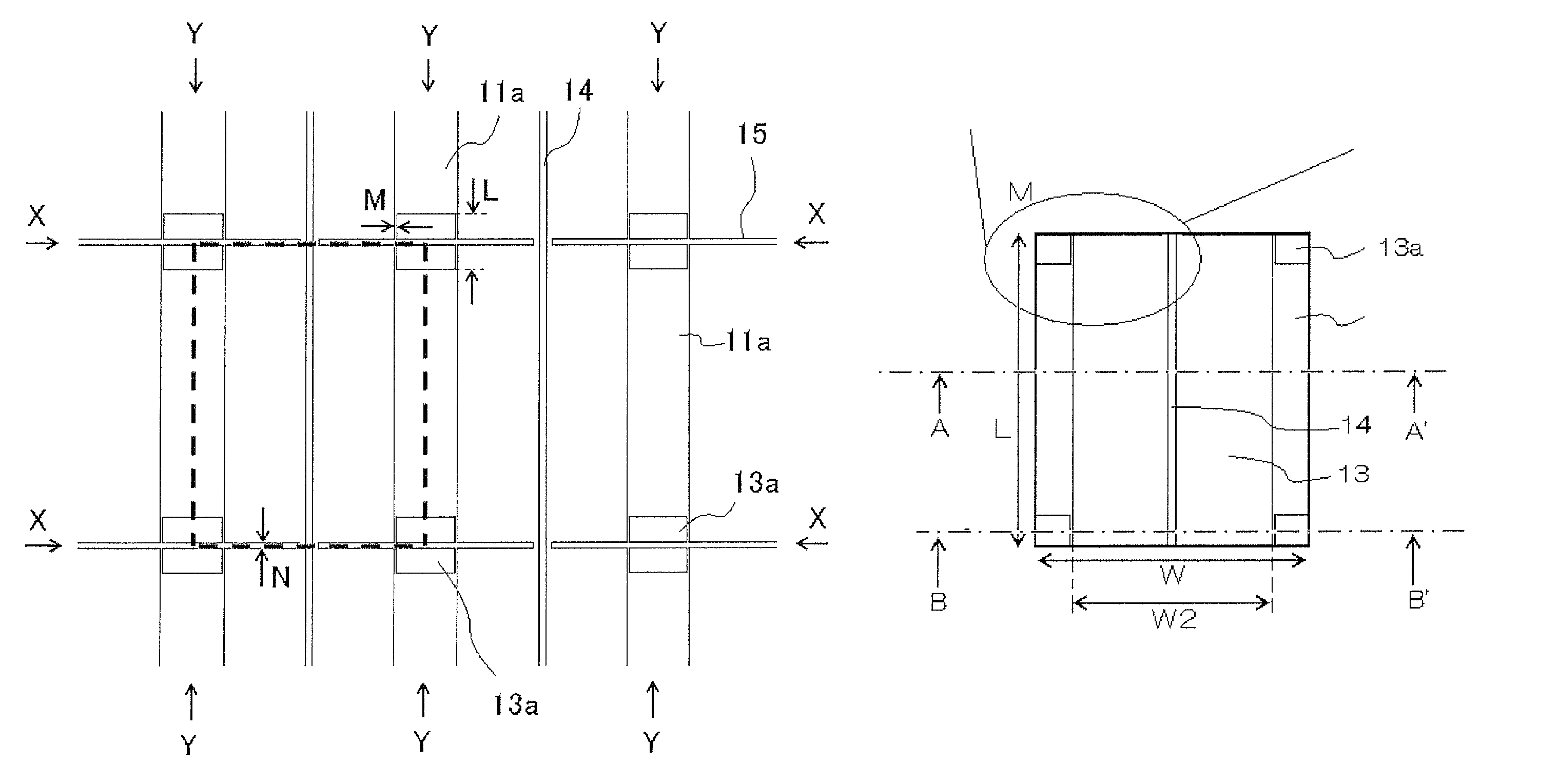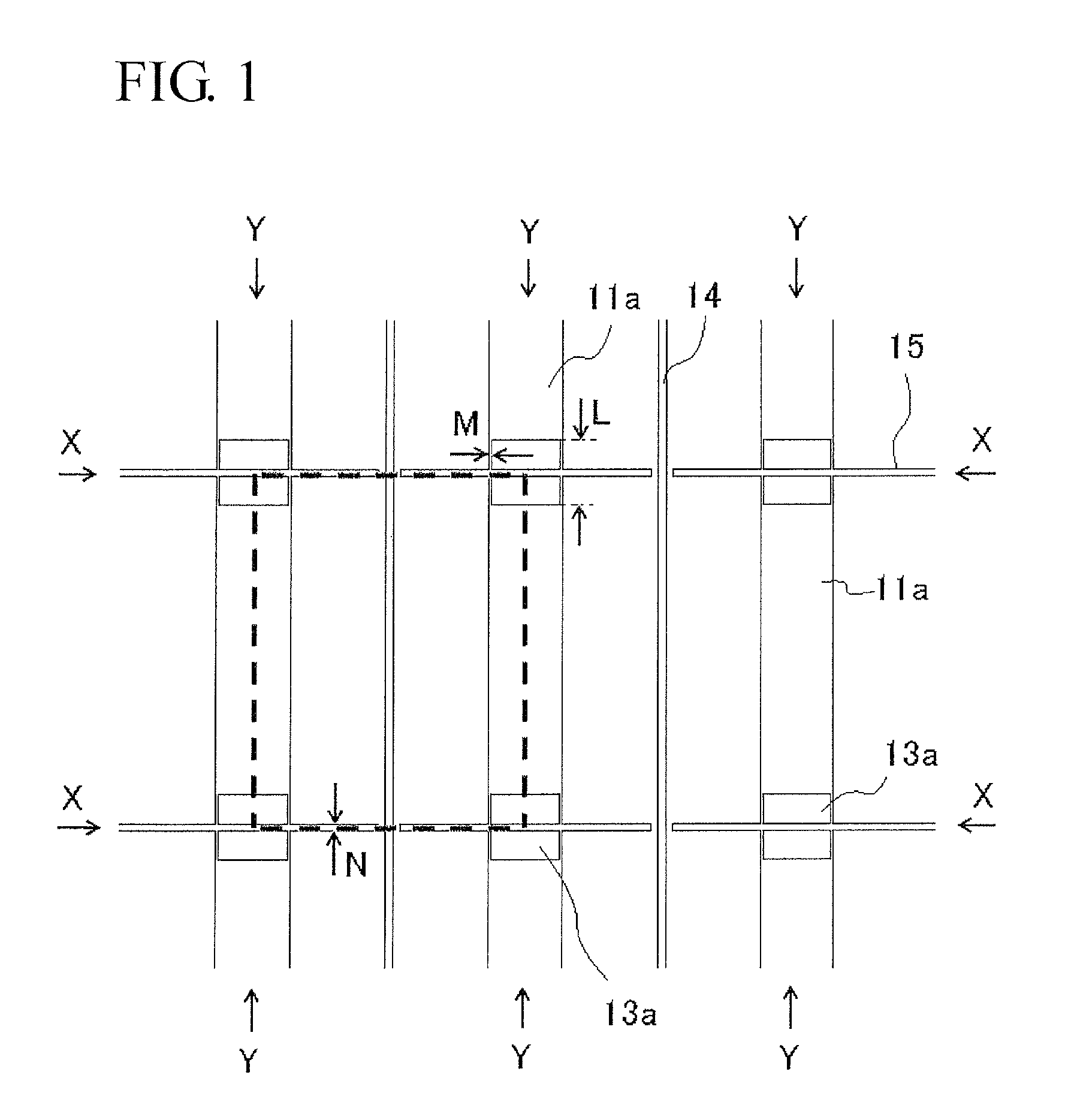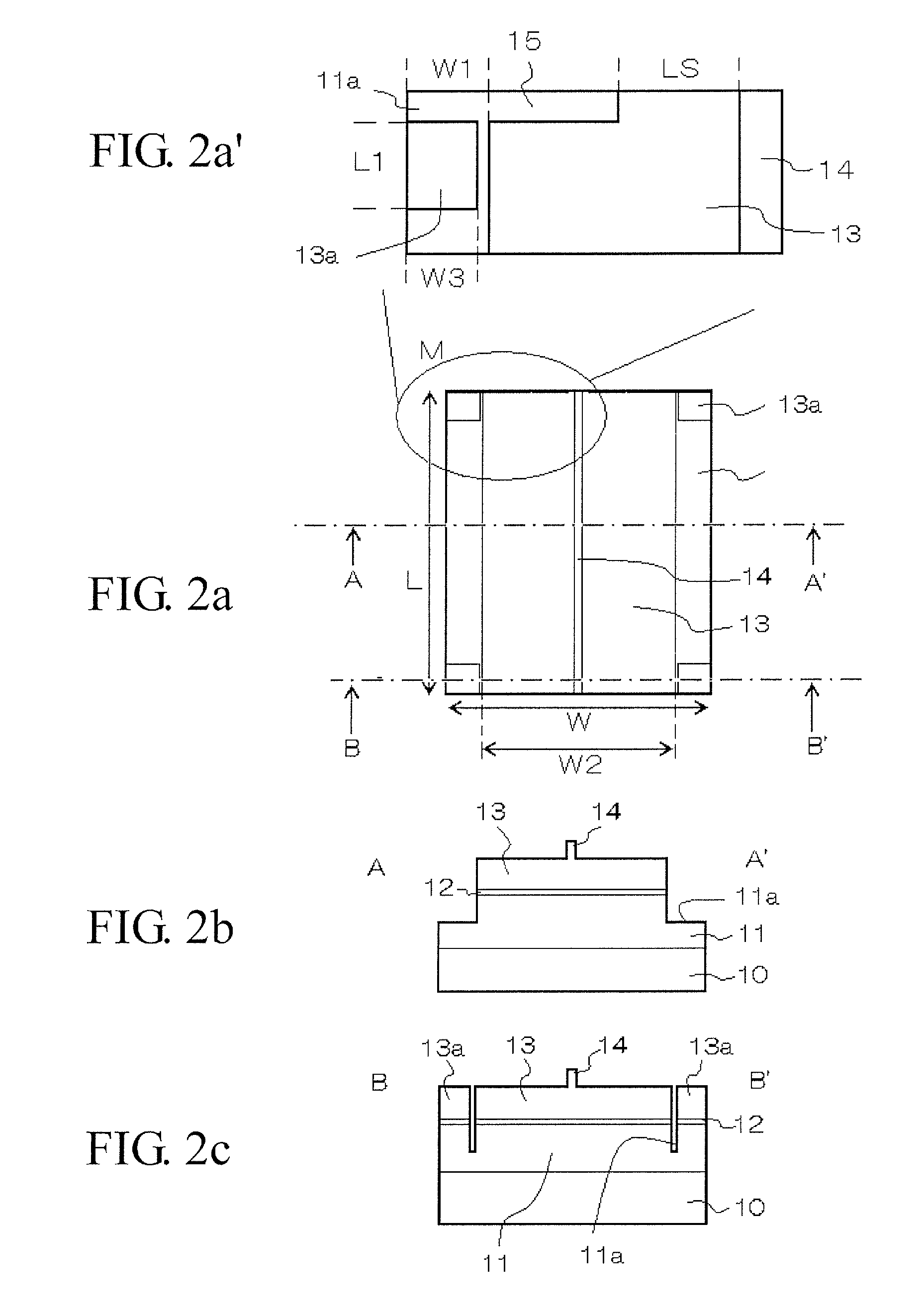Method for manufacturing a nitride semiconductor laser element and a nitride semiconductor laser element
a laser element and semiconductor technology, applied in the field of manufacturing a nitride semiconductor laser element, can solve the problems of affecting the yield of the desired cavity length, difficult to obtain a sufficiently stable yield, and the distorted cleavage plane of the intended position, so as to improve the yield and prevent the effect of the start-up voltage decrease and good current and voltage characteristics
- Summary
- Abstract
- Description
- Claims
- Application Information
AI Technical Summary
Benefits of technology
Problems solved by technology
Method used
Image
Examples
example 1
[0160]A method for manufacturing a laser element of this Example is explained by the following.
[0161]First, an n-GaN substrate is set in a reaction vessel of the MOVPE apparatus. In the reaction vessel, a first buffer layer composed of n-Al0.02Ga0.98N doped with Si at 1×1018 / cm3 is grown on the GaN substrate using trimethyl aluminum (TMA), trimethyl gallium (TMG) and ammonia (NH3) as the raw material gas with a silane gas for an impurity gas. After that, a second buffer layer composed of n-In0.04Ga0.96N doped with Si at 1×1018 / cm3 is grown using trimethylindium (TMI), TMG and NH3 as the raw material gas with a silane gas for an impurity gas.
[0162]An n-side clad layer composed of Al0.11Ga0.89N doped with Si at 1×1018 / cm3 is grown using TMG, TMA and NH3.
[0163]Next, n-side wave guide layer composed of undoped Al0.06Ga0.94N is grown.
[0164]The temperature is set to 950° C., a barrier layer composed of Al0.15Ga0.85N doped with Si at 1×1019 / cm3 is grown using TMA, TMG and NH3. The silane g...
example 2
[0184]A semiconductor laser chip is produced by substantially the same method as in Example 1, except that n-type GaN is used, a substrate having a first region of the (0001) plane and a second region of the (000-1) plane, respectively, a low dislocation density region and a high dislocation density region is used, the width of the exposed regions is changed in an alternating pattern, and the widths of the exposed region and the island layer are varied in the cavity end face.
[0185]As shown in FIG. 6, the laser element of this Example comprised an exposed region 11a and an exposed region 21a, which respectively have widths of about 70 μm and about 30 μm, and the widths of island layers 13b and 21b near the cavity end face are respectively about 160 μm and about 120 μm.
[0186]As shown in FIGS. 7a to 7d, the laser element obtained by this manufacturing method is such that the island layers 13a and 21b are formed with varying widths in the cavity direction. Since the island layers are di...
example 3
[0188]As shown in FIG. 9, a V-shaped laser scribed groove is formed as a second auxiliary groove 16, from the p-type contact layer to the substrate, at a focal distance of just focus ±10 μm, a feed rate of 1 to 200 μm / sec, and an output of 0.1 to 10 W, in a direction perpendicular to the cavity direction, after p-side ohmic electrode and an n-side ohmic electrode are formed, but before the cavity end face is produced. The maximum depth of the laser scribed groove in this case is about 25 μm, and the width of the groove on the p-type contact layer surface (the width of the opening of the V-groove) is about 5 μm. The length of the second auxiliary groove 16 in the island layer 13b is 140 μm, and the length of the second auxiliary groove in the island layer 21b is 100 μm.
[0189]After this, an acetic acid solution is used to ultrasonically wash the interior and surface of the laser scribed groove, and any scattered material, etc., adhering thereto is removed.
[0190]A laser element is then...
PUM
| Property | Measurement | Unit |
|---|---|---|
| off angle | aaaaa | aaaaa |
| off angle | aaaaa | aaaaa |
| thickness | aaaaa | aaaaa |
Abstract
Description
Claims
Application Information
 Login to View More
Login to View More - R&D
- Intellectual Property
- Life Sciences
- Materials
- Tech Scout
- Unparalleled Data Quality
- Higher Quality Content
- 60% Fewer Hallucinations
Browse by: Latest US Patents, China's latest patents, Technical Efficacy Thesaurus, Application Domain, Technology Topic, Popular Technical Reports.
© 2025 PatSnap. All rights reserved.Legal|Privacy policy|Modern Slavery Act Transparency Statement|Sitemap|About US| Contact US: help@patsnap.com



